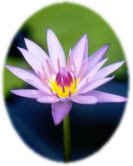The Yoga of Cold Water
Why would anyone want to take a cold shower when a warm shower feels so good? Because when that cold water hits your skin, your body systems begin to do what can only be described as internal yoga.
You see, cold water opens the capillaries and strengthens the entire nervous system. When you take a cold shower, your blood rushes out to meet the challenge. This means all the capillaries open up and all toxins are cleansed out.
When the capillaries return to normal, the blood supply goes back to the organs. Each organ has its own blood supply. In this way, the organs get their flushing, like a beautiful rain that grows the fertile crops. When the organs get flushed, immediately the glands have to change their secretion. When the glands secrete, the entire body system is revitalized.
The glandular system is the key to vitality. According to the science of yoga, youth is measured by how vibrant and healthy the glandular system is.
When you are under the cold shower, your body will certainly feel the cold. But if given enough time (30 seconds to 1 minute), your blood and capillaries will open fully and your body will not feel cold.
If you bring your body to that temperature where it can meet the cold by its own circulatory power, you have won the day. You have empowered your own health and happiness.
Preparing The Body
Cold showers are strictly for the purpose of internal health, and are not meant to replace warm showers or bathing.
- First massage your body with pure oil. Almond is preferred for its high mineral content. The oil will be driven into the skin through the pores while showering, and it will provide a protective coating to the skin.
- Using a pair of mid-thigh or knee-length underwear or shorts while in the shower will protect the femur bone in the thigh, which controls the calcium-magnesium balance in the body. If no such protection is available, keep the thighs from the direct hit of the water.
- Allow the cold water to hit your feet, bottoms and tops, and then the rest of your body, including your face, but not your whole head. Massage as you move in and out from the cold water. Pay special attention to the lymph nodes under the armpits to help prevent colds. Women should massage their breasts under the cold water to keep circulation strong and to keep cancer away.
- Breathe deeply or chant a mantra to keep yourself going. Start at 30 seconds, and work up to 1 minute. Towel dry, rubbing the skin briskly.
Although warm showers can be taken at any time of the day, a brief, cold shower is best taken first thing in the morning.
Those who have circulatory problems or other medical conditions should seek medical advice before trying cold showers. Pregnant or menstruating women should not take cold showers.
Source from K.I.S.S Guide to Yoga











